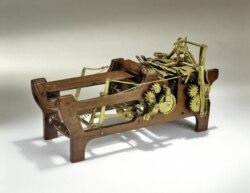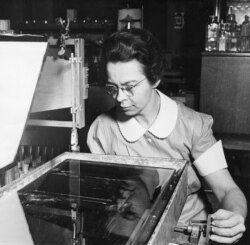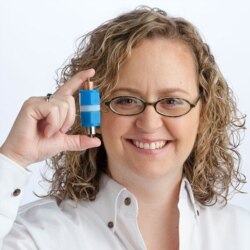Women inventors have created extraordinary innovations, but most haven’t gotten the praise they deserve, according to Joyce Bedi, curator of an upcoming exhibit called “Picturing Women Inventors” at the Smithsonian National Museum of American History in Washington. Currently, the museum is closed due to the coronavirus pandemic.
The exhibit coincides with Women’s History Month in the United States, in March, which highlights the accomplishments of American women, including inventors.
Women inventors have always had the “courage, persistence and resilience” to succeed said Rini Paiva, an executive vice president at the National Inventors Hall of Fame in North Canton, Ohio. So far, 45 women have been inducted into the museum.
Bedi points out that women inventors historically experienced economic and social barriers that made it difficult for them to patent their creations. To avoid bias, some of them used their initials or patented under a company or man’s name.
But that slowly began to change after a 1790 patent act enabled “any person or persons” to petition for protection of their original methods and designs. That made it easier for Mary Kies to become the first American woman to receive a patent in 1809 for a new technique of weaving straw with silk or thread to make hats.
Later in the 19th century, Margaret Knight bagged a vital patent for a machine that cut, folded and glued flat-bottomed paper bags, which previously had been tediously put together by hand. “Knight had worked in factories, and so she became familiar with how machines worked,” Bedi told VOA.
A few years later, inventor and entrepreneur Maria Beasley patented an idea to help save people’s lives — a better life raft with guard rails. Among Beasley’s other innovations was a steam generator, foot warmer and barrel hooping machine.
In the early 20th century, physicist and chemist Katharine Burr Blodgett was known for her contributions to industrial chemistry. Blodgett’s most famous invention was an anti-reflective coating, used today on items such as glasses, microscopes and computer screens.
It’s hard to imagine a time when there weren’t windshield wipers. But to Mary Anderson they seemed like a necessity after riding a streetcar one snowy day and watching the driver go outside to clean the windshield. So, Anderson came up with the idea of windshield wipers, which she patented in 1903.
Decades later in 1988, ophthalmologist Patricia Bath revolutionized cataract surgery and became the first female African American doctor to receive a medical patent. Bath created a laser technology device that made cataract surgery safer and less invasive.
Many people may not know who Stephanie Kwolek is, but they have probably heard the name of the strong synthetic fiber she developed — Kevlar — which was patented in 1966. Lightweight and heat-resistant, Kevlar is used in everything from boats to bulletproof vests. The scientist, who was inducted into the National Inventors Hall of Fame in 1994, passed away in 2014.
Sumita Mitra, who is still living, became part of the Hall of Fame in 2018. Among her almost 100 patents related to dental technology is a tooth filling material that is stronger and more versatile than previous composites and used worldwide.
At present, according to the U.S. Patent Office, more women inventors are filing for patents, a number of them both scientists and entrepreneurs.
Amy Prieto, a Colorado State University chemistry professor, is also an entrepreneur who invented a new kind of battery, named after her, that received a patent in 2014. Although still in development, the Prieto battery is a lightweight 3-D battery that can be shaped into various sizes, with potential applications from smart phones to electric vehicles. And unlike other batteries on the market, this cutting-edge rechargeable battery “lasts a long time on a single charge, and is fast-charging, safer, and non-toxic,” Prieto told VOA.
Another contemporary scientist, Theresa Dankovich, invented a type of water filter paper that kills almost 100% of waterborne bacteria and viruses. In 2016, she founded Folia Water, a company that markets the filter as part of an affordable and easy-to-use system. Developed for use in developing countries, Dankovich explained the system works like a high-tech coffee filter, where the paper is inserted into a funnel “that fits into containers people use every day.”
As an inventor, Prieto said she hoped to make a difference.
“I wanted to be creative and also benefit humanity at the same time,” Prieto said. “As more women with technical backgrounds start their own companies, I think we’re going to see a lot more women inventors.”











